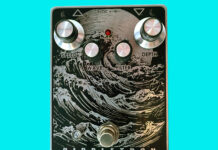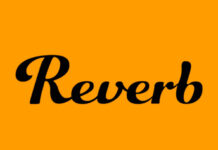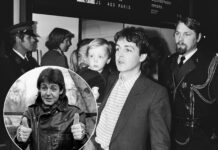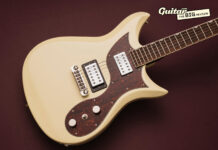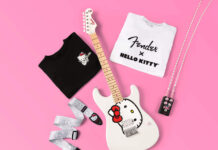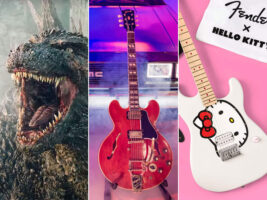
Online games have been doing it for years – are guitar brands cottoning on to the lucrative nature of crossover collaborations?
Godzilla. Back to the Future. Hello Kitty. Is the guitar world taking a leaf out of the online gaming playbook, and are we about to see more crossover collaborations between guitar brands and fictional characters and franchises?
When Fender Japan unveiled three Godzilla-themed Stratocasters earlier this month, the guitar community went nuts. With unique artwork depicting the King of the Monsters – and one even sporting a button unleashing Godzilla’s mighty roar (hopefully without the Atomic Breath, to boot) – our article on these six-strings was one of the best-performing of the last few weeks. Readers loved them.
And when Gibson began teasing the imminent arrival of a Back to the Future Marty McFly-inspired Gibson ES-345 on social media – with glam photos of the guitar set against the film’s classic DeLorean time machine car – it sent gearheads’ pulses racing.
Those guitars – a $20,000 Custom Shop model, alongside a much more affordable Epiphone version – were officially launched last week, and our source at Gibson confirmed they’d sold out online in about an hour. Yep, a $20k guitar – 88 made (corresponding with the 88 miles an hour needed to time travel in the BTTF universe, of course) – sold through in an hour. You can do the maths on that one yourself…
Gibson and Epiphone Back to the Future ES-345s. Credit: Gibson
Such furore is not always immediate, however. When Fender partnered with Sanrio to launch its Hello Kitty Stratocaster in 2006, it went largely under the radar. That is, until YouTuber TheDooo began uploading videos of himself playing the guitar in the late 2010s, causing online searches for the six-string to tick dramatically upwards. Average listing prices on Reverb rose 254%, too.
There’s now a series of Fender x Hello Kitty guitars, accessories and merch, and even a range of child-friendly Loog x Hello Kitty guitars, too.
Online video games have been doing crossovers with fictional characters and franchises for years. Take Call of Duty and Fortnite, for example. With its Warzone platform, CoD regularly launches purchasable skins and weapons themed like classic characters and their fictional worlds. Some standout CoD crossovers have been with Saw, Rambo, The Terminator and Squid Game. But this is just a tiny sample. Godzilla is now a beast which has appeared both in the guitar world and Call of Duty universe.
Fortnite is even more prolific on this front. Epic Games’ massive cross-platform battle royale has seen crossovers with the likes of Marvel and DC Comics, Star Wars and Dragon Ball, and even regularly with real-life stars including Travis Scott, Daft Punk and Ariana Grande.
So what’s the insight to take here? Well, professional collaborations, fundamentally, are designed to maximise returns by allowing each party to tap into the audience already created by the other. And in the case of Call of Duty and Fortnite, they’re clearly working and are clearly lucrative, otherwise these companies wouldn’t continue to do them.
Such collaborations are also a way of maximising a customer’s lifetime value. A player purchases the latest Call of Duty title, and at this point their money stops funnelling to the game developer. That is until they see their favourite movie character playable in a downloadable content pack…
Map this onto the guitar world: a player – one who’s not a collector or a total gear head, at least – buys a guitar, and it covers everything they need. But they also happen to be part of Back to the Future’s huge cult following. And when Gibson launches an Epiphone Marty McFly signature model, they think, ‘Maybe it’s time to expand the collection.’
It’s argued by many that the guitar was perfected decades ago. Sure, there have been significant improvements in components, for example, but the triple-single-coil Stratocaster has remained largely unchanged since its invention.
Sure, all of us heavily involved in the guitar space love to wax lyrical on the latest in pickup design, glow-in-the-dark fret markers, or why wood sourced from some remote island in the Pacific means a 2.3% improvement in resonance.
But it’s important to remember there’s also a huge market out there for guitarists who aren’t absolutely obsessed with the minutiae. I’ve had friends not immersed in guitar culture – but still play – ask me on several occasions what’s changed with guitar design in the last 50 or 60 years.
For guitar brands, crossover collaborations may increase the likelihood these casual players will dip their toes back into the guitar market and make another purchase. And that’s a good thing for the rest of us, too, who simply want to see more people join the guitar community and have it thrive.
Whether Godzilla Strats, Back to the Future ES-345s and Hello Kitty Loogs mark the start of a new trend in the guitar market, or whether they’re just a spate of coincidental crossovers remains to be seen. But if the former, our minds are certainly racing as to what might come next…
The post Online games have been doing it for years – are guitar brands cottoning on to the lucrative nature of crossover collaborations? appeared first on Guitar.com | All Things Guitar.
Source: www.guitar-bass.net



